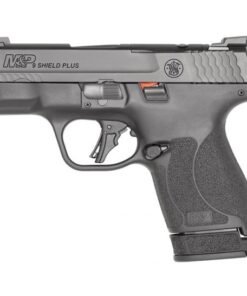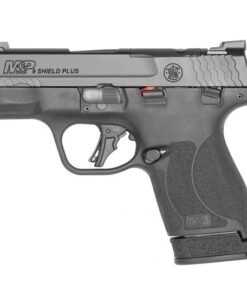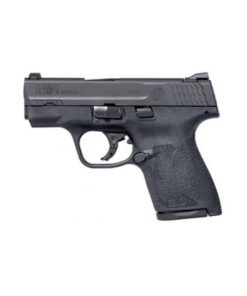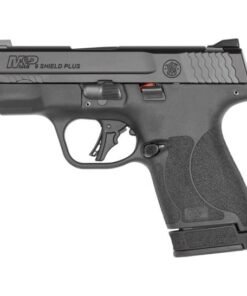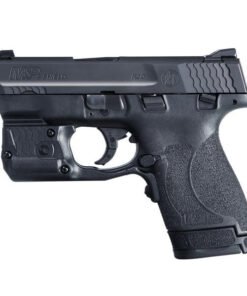Smith & Wesson Pistols
Smith & Wesson semi auto pistols are compact and lightweight. Browse the latest .22 & 9mm Smith & Wesson pistols at Academy Sports + Outdoors. Smith & Wesson – Pistols Smith & Wesson
Completely new firearm designs are a rarity. Instead, the market is filled with upgraded or altered versions of existing models. That’s the case with the S&W Equalizer — even though, technically it is a new model, it is in fact the sum total of things learned by Smith & Wesson over the last fifteen years with their M&P line. Consider it, if you will, a “product improved” version of the Shield EZ, with incremental improvements pulled from the standard M&P M2.0, the Shield Plus, and the market in general.
The S&W Equalizer is a polymer-framed pistol chambered in 9mm that sports an optics-ready slide. Honestly that describes 90+% of all new guns these days, but the Equalizer sports a few features you won’t see outside of Smith & Wesson. It has a 3.675-inch barrel and weighs 22.9 ounces with the provided 13-round magazine inserted. It is not a striker-fired design but rather sports an internal hammer, and a single action only operating system. More on that in a bit. There are two versions, and the only difference is whether or not you want a thumb safety. I secured a sample of the Equalizer NTS (No Thumb Safety). Like all M&P pistols, the Equalizer is built for use and carry. The barrel and slide are both stainless steel with S&W’s “Armornite” finish, which is a nitride finish that provides good protection against corrosion. The slide is cut to accept optics with a Shield RMS/RMSc/Holosun 507k footprint.
The S&W Equalizer most closely resembles the M&P Shield EZ which was first introduced in .380 ACP in 2018, and then followed up by a 9mm version. However, the EZs are fed by single-stack magazines. Both in 9mm and .380, capacity is 8+1. One of the greatest things about this pistol is that it’s sold as a package — the Equalizer is supplied with a flush 10-round magazine, a slightly extended 13-round magazine (which brings the grip to roughly the same length as the EZ), and a big stick 15-round magazine. The Equalizer is fed by the same magazines as the M&P Shield Plus, so they are somewhat common. A Maglula UpLula magazine loader is also provided with the gun.
From the side, the Shield EZ and the Equalizer seem to have the same grip angle, however I had a chance to pick up both guns side by side. About the only thing I don’t like about the EZ is the very vertical grip angle, which is shared by the Equalizer. However, perhaps because of the slightly wider grip to accommodate the double-column magazine, the grip of the Equalizer doesn’t feel as vertical, and I like it better. A brief aside — go to your local gun store and get your hands on whatever gun you are interested in buying. If you don’t quite like the feel of the Equalizer, try out a Shield Plus. It is fed by the same magazines, but has more of a grip angle and a different grip contour. I feel the S&W M&P Shield Plus is one of the best carry guns on the market today, and often overlooked.
From its first use as a label for the J-Frame revolver, the “Chief’s Special” was an innovative approach to concealed carry. The revolver was introduced at the 1950 International Association of Chiefs of Police (IACP) conference. Smith & Wesson’s sales team asked police chiefs to vote on a name for the revolver, and “.38 Chief’s Special” won. The company moved to using model numbers in 1957, but the name reappeared in 1999 on its 3rd Generation semiautos. Though written out on the left side of the slide, “Chiefs Special” was abbreviated in the model name as “CS” for the CS9, CS40 and CS45. Those compact pistols were discontinued in 2002 (CS40) and 2006 (CS9/CS45) ahead of the launch of the polymer-frame M&P series. In the 16 years since, S&W has not applied the label to another model, and we’re not certain that it was the company’s intention to do that here. But “CSX” suggests that the name and lineage was top of mind as an engineer sketched out the plans for the new compact, aluminum-frame, double-stack, single-action auto in 9mm. Oh yeah, it’s also hammer-fired. Is the CSX a step backward for Smith & Wesson? Or did they identify an underserved market? Either way, everyone is talking about the unexpected CSX.
Smith & Wesson Pistols
Smith & Wesson Pistols
Smith & Wesson Pistols
S&W M&P SHIELD PLUS THUMB SAFETY OPTICS READY 9MM PISTOL, BLACK – 13536
Smith & Wesson Pistols
Smith & Wesson 11810 M&P9 Shield M2.0 9mm Centerfire Handgun with Night Sights
Smith & Wesson Pistols
SMITH & WESSON M&P SHIELD EZ 9MM PISTOL WITHOUT MANUAL SAFETY, BLACK – 12437
Smith & Wesson Pistols
SMITH & WESSON M&P SHIELD PLUS ULTRA COMPACT 9MM PISTOL, BLACK – 13248
Smith & Wesson Pistols
Smith & Wesson Pistols
Smith & Wesson M&P9 Shield M2.0 w/Crimson Trace Laserguard Pro, Semi-auto, 9mm, 8+1 Rds.
Smith & Wesson Pistols
Smith & Wesson Performance Center Ported M&P Shield M2.0 Semi-Auto Pistol with Manual Safety
Smith & Wesson Pistols
SMITH AND WESSON M&P9 M2.0 COMPACT 9MM 4″ NTS BLK 2 15RD (022188871685)


